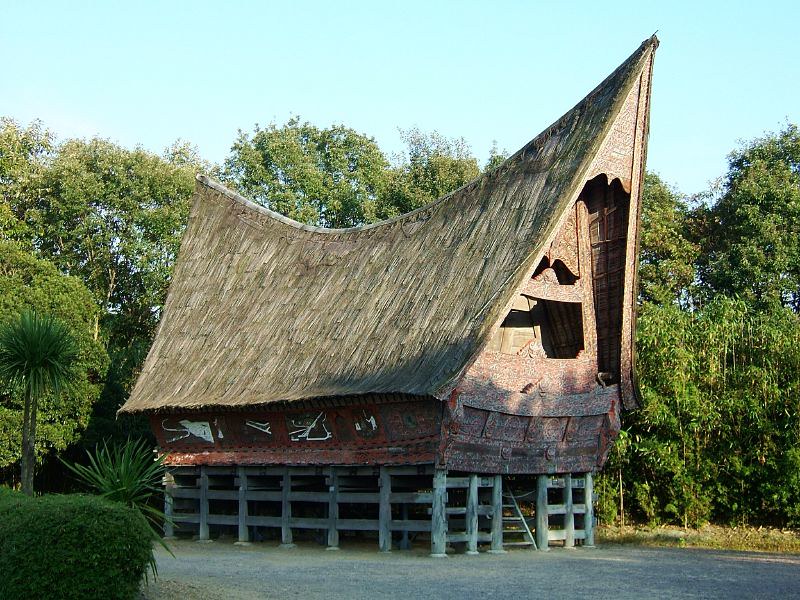Vernacular Architecture: Going Eco-Friendly
Vernacular architecture is about addressing human needs and obtaining a result that can’t be maintained through technology. The needs, construction materials, and also traditions of a particular locality define the characteristics of vernacular architecture.
Vernacular architecture definition is to construct a building or space with local materials and reflect local traditions. The environment, culture, and historical traditions of the particular area also impact the vernacular architecture to a great extent.

Origin of Vernacular Architecture:
It began as a shield from the environment. As mankind developed, there was a need to build shelters to protect themselves. For the same, they used materials available near them. This allowed man to build their own spaces without the help of architects. However, with time vernacular in architecture got so much attention due to its environment-friendly nature. It is still practiced by architects around the world. However, with various new technologies and innovations.
This style of architecture is not much talked about. However, there are many great buildings in the list of Vernacular architecture examples.
What is Vernacular architecture and how it works?
Any architectural style that uses the traditions and material of any particular locality in an eco-friendly nature is termed Vernacular architecture. Moreover, with the increase of interest in sustainability, Vernacular architecture has become the mode of constructing energy-efficient buildings.
Vernacular in architecture has also helped architects to apply climate-responsive methods to modern constructions. It is all about the local architecture and varies from place to place but the end result is the traditional design solution.
Characteristics of Vernacular Architecture:
We are now clear with what is vernacular architecture and how climate plays an important role in this style. So, let’s have a look at how we can characterize Vernacular Architecture.
- Orientation of the building: The building should be oriented to favor the thermal requirements.
- Overhanging eaves: The external building walls and openings are shaded with projections. It protects the interiors from sun and rainwater.
- Ventilation: It is the key point for vernacular in architecture. Proper cross ventilation allows minimum energy usage.
- Loft: Earlier Vernacular buildings had lofts used as storage spaces. It also helped to keep the lower part of the building cooler.
- Local materials: Based on climatic conditions, locally available traditional materials should be used.
- Sustainable features: Make effective use of features like fountains, jalis, etc., to transform the microclimate.
- Courtyard Planning: Central courtyard is another important feature to control the heat gain of the building.
- Local technology: Traditional construction methods must be used to boost the local economy.
Vernacular architecture materials:
Buildings built with local materials and local labors are environmentally friendly. The use of local materials cuts down transportation costs and saves nature from pollution. For instance:
- The traditional homes use clay in Central America. South-west America uses baked earth effectively.
- Bamboo structures are very famous in Vietnam.
- Nepali Architecture uses Stone and clay.
- Building construction in Spain uses timber effectively.
- Stone and timber are locally available in Ghana. Local buildings also reflect the use of these materials.
- In India, the materials vary for different places. Rammed earth, mud bricks, thatch, cob, bamboo, stone, clay, timber, fly ash bricks are some of the most common materials. Mud construction is highly prominent in India.




Vernacular architecture similarities and dissimilarities:
The elements, characteristics, and materials in Vernacular architecture are different for different localities. The only similar thing is the purpose of using local architecture.
Vernacular architecture in India is in practice for a long time and has some great innovations. India is a diverse country. Therefore, there is also a diversity of traditional construction styles bring followed. Some materials from hot and humid climates won’t be suitable for a colder region and this is also applicable across the world. One of the most prominent architects who has been using traditional elements even during modern times in India is Revathi Kamath.
There are three different types of vernacular buildings: kachcha, pakka, and semi-pakka.
With time Vernacular architecture started spreading in many other parts as well because it is cost-effective. Many architects across the world started using this style in their architectural practice.
If we see examples from Vernacular architecture in India we will see so many different varieties and features across the country. In fact, different countries have different styles which we will look at in detail in this article.
Vernacular architecture examples:
All the Vernacular architecture buildings are unique in style, technique, materials, and finish. Some of the greatest examples are:
1. Batak Toba House, Indonesia:
Batak houses resemble boat-shaped structures. They have carved gable roofs and ridges. They are traditional houses for the Toba people. Generally found in a group of 8 to 10 houses forming a small village. These houses are located in a heavy rainfall zone. Therefore, they are built on stilts to prevent flooding. These stilt pillars earlier used to rest on stones. However, now they usually have a concrete base.
These houses usually have 3 levels. The lower stilt zone for the work area, the middle zone for the family living area, and the top zone is the attic, for valuables and ancestral shrines.
The major construction materials used here are bamboo and wood. Sugar palm fiber thatch serves as the roof of these houses. Rattan ropes tie the hatch together.
Batak houses are very decorative and unique in the form.

2. Primary School Tanouan Ibl, Mali:
The architecture of this primary school reflects the culture of local residents, the Dogon. Mined clay is the major construction material here. The details made with clay are quite remarkable.
Hydraulic Compressed Earth Blocks (HCEB) have replaced burned bricks in this building. This made the building bear both the hot sun and the heavy rainfall. The locally available red earth covers its roofs, with 6% cement for waterproofing.
For ventilation and light, the roof has ceramic tube openings. However, these tubes need to be closed during the monsoon. This building shows perfect amalgamation of technology and traditions.
The use of HCEB bricks in walls, roof, and floor integrates the building into the environment. This shows how the buildings of Dogon villages merge with the landscape.
3. Junoot Eco Resort, Oman:
They are basically triple vault, eco dome structures. The major construction material used here is earthbags. For these structures, many local materials were experimented for these structures. Old fishing nets were mixed with plaster for better reinforcement. For flooring also, a local stone is used. The interiors also feature local Omani arts and crafts. Solar energy powers the entire resort.
There is an internal wind tower in this structure and the wall thickness is 50 cm which keeps the inside cool.
The white colored structure looks so beautiful be it day time or night, but the warm lights make it mesmerizing during the night.
4. Dancing light house, Unites States of America:
When we hear the word vernacular architecture, rough finish structures with dark images come into our minds. However, you won’t believe it while looking at this dancing house. It rises like a sculpture in the desert. Its floating roof canopy building draws inspiration from nature. Rammed earth forms the walls of this vernacular building. The unusual shapes and textures, use of high ceilings and glass make the structure stand out.
The swimming pool orientation also helps in keeping the building cool. The dancing light house is the perfect example of how stylish a building with raw materials can be.
5. Loyola’s Chapel, India:
This chapel design is very much different from a “typical chapel” because of its exposed brick walls and jali patterns. Designed by one of the most renowned architect Laurie Baker, this chapel has a unique language, expressed through local materials. The architect also went for a very unique technique using brick in this Chapel design. Two exterior walls with a cavity in between strengthen this building. The cavity also aids in keeping the interiors cooler. Opening in these walls allow effective natural lighting in interiors. Jali pattern in brick walls also allows ample lighting and ventilation. This is one of the best examples of cost-reduction vernacular architecture.
After looking at all the Vernacular architecture examples, we can conclude how local materials can be used for beautiful architecture.
Vernacular architecture definition is the sustainable, cost-effective approach and keeping the traditions alive. It’s so beautiful how different local materials, techniques, and innovations in different regions have shaped the vernacular style of architecture.

